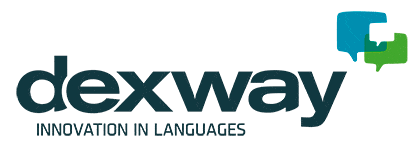Language training e-learning solutions have come a very long way since the early days of rote language learning. More and more professionals are seeking to invest their time in learning a new language, and many of them are discovering just how much easier it is to do so now that there are so many digital and interactive language e-learning solutions on offer. In addition, in the context in which we currently find ourselves, e-learning stands as the best solution to comply with social distance and continue our language training.

In fact, the only difficulty many would-be learners come across is often deciding which of the many language e-learning training solutions that are available is right for them!
The introduction of technology in classrooms and the option of blended learning, or even 100% online training, are alternatives to traditional education that are accelerating their implementation due to the needs imposed by the pandemic and the measures to avoid contagion. However, in addition to distance education, schools, universities and training centers around the planet are discovering the advantages of e-learning that we have talked about so much in this blog.
To get started in online education, the first thing is to choose the most beneficial elearning solution for each case, and that begins with knowing the main alternatives.
Language Training E-learning Solutions
Below we’ve outlined four of these successful e-learning solutions for language training.
#1 Mobile E-Learning Solutions
This e-learning solution is very popular with professionals as it is completely flexible. Learners can choose to invest as much or as little time in the learning process as they have available and can access online language learning resources from their smartphone, wherever they are. This is a hugely productive way to use time that may otherwise have been wasted, such as commuting time, time waiting for appointments and coffee breaks.
In addition, the Dexway application allows downloading of lessons to continue learning offline. The student downloads their lessons when they have a network available and then completes their lessons without losing their progress. Course progress needs to be synchronized only every 30 days.
#2 Flipped Classroom Solutions
Some people set out to learn a language with the firm idea that they want to make use of the many benefits of a classroom environment. In these cases, it may be wise to consider looking at the flipped classroom methodology. This type of language teaching e-learning solution can be incredibly successful as it combines the traditional teacher-student relationship with the many online resources that are now available.
The thing that makes the flipped classroom different is that it seeks to make the most of valuable class time by encouraging students to read new content and watch video lectures at home and complete vocabulary and verbal exercises in class.
#3 Blended Learning E-learning Solutions
Blended language learning is a multi-channel method that encapsulates the best of modern online learning and traditional in-classroom learning. Within this model, language learners will be invited to participate in normal classroom activity but will also be given access to high quality digital learning resources. These online resources play the same role as language labs but are available 24/7 from whatever device the learner has to hand.
The flipped classroom is one blended learning modality, but traditional education can also be combined with online reinforcement to harmonize the level of the students in your language groups. This, which is always very important, when face-to-face teaching hours are cut, it is even more so. Teachers cannot have direct daily contact with students (either for a period of closure, or because shifts are imposed), so the follow-up they can do with them is less. If interactive reinforcements are used, this is fixed.
Students can progress at their own pace with online courses, and keep up with the class level. In addition, there are courses specialized in these objectives, such as Dexway Reinforcement courses, with tests to identify deficiencies and apply training pills that work on those objectives. At the same time, teachers receive all the feedback on the progress of their groups in comprehensive reports.
# 4 Language labs
Language labs are great ways to use technology in the classroom to learn languages. They increase practice, adapt to the rhythm of particular work and the teacher is present to answer any questions at the moment they appear. Furthermore, these labs can also be continued offline.
Dexway’s application for Windows, MacOS, Android and iOS allows you to synchronize progress in the course between the classroom position and the application, so that physical classroom lessons and online lessons can be alternated.
Are you interested in learning more about these e-learning solutions? Read more about the flipped classroom method and blended learning.

